Livingston, Montana 作者: 来源: 发布时间:2021-01-27
I. Population and Area
₋ Area
Land: 15.59km2 (6.02 sq mi)
₋ Population (2018)
Total: 7,784
Density: 450/km2 (1,200/sq mi)
I. Natural Geography
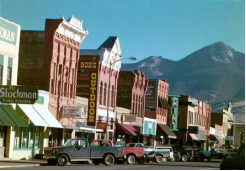
Pine Creek Trail
₋ Livingston, city, seat (1887) of Park county, south-central Montana, U.S. It lies about 20 miles (32 km) southeast of Bozeman near the Yellowstone River. The city is surrounded by divisions of the Gallatin National Forest. Originally called Clark’s City, it was founded in 1882 as a division headquarters of the Northern Pacific Railway and was renamed for Crawford Livingston, a railroad executive. Large locomotive repair shops were built, and agriculture and ranching developed concurrently with mining activities. Livingston holds an annual roundup and is the site of the National Fresh Water Trout Derby. Tourism (including dude ranches) and the sale of locally produced artwork are significant to its economy. The northern entrance to Yellowstone National Park is 28 miles (45 km) south. Inc. 1889. Pop. (2000) 6,851; (2010) 7,044.
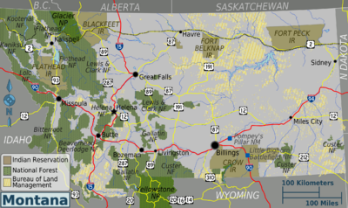
II. GDP
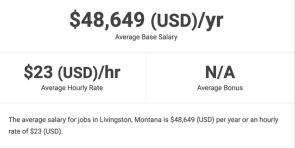
III. Industrial Characteristics

- The quaint town of Livingston, Mont., has attracted cowboys, ranchers, the rich and famous and artists enamored by the scenery for more than 100 years. It's also been featured in A River Runs Through It, The Horse Whisperer and Marlboro advertisements.
IV. Attractions
Sacajawea Park
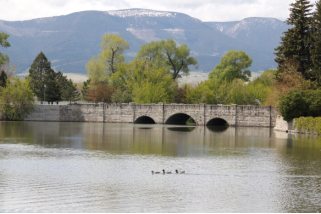
- During the return journey, Clark separated at the Three Forks of the Missouri with a contingent of twelve to explore the Yellowstone River. Traveling overland, they reached the Yellowstone River valley on July 15, 1806, near the present-day city of Livingston. As Clark described, “1½ miles below the plain the river Passes out of the rocky mountains high on each Side bottom in those mountains narrow. river about 120 yds wide bold and deep the water of a whiteish blue Colour a mountan which is ruged N. W has Snow on parts of it. Those above & on the East Side of the river is rugid and covered with Snow those on the West is also high but have no Snow. much Dead timber on its N. Side.” They camped along the Yellowstone that evening, and then began the 19-day journey downriver to the Missouri.
- The Corps of Discovery’s entry into the Yellowstone River valley is commemorated at Sacajawea Park in the city of Livingston. The municipal park is about a half-mile downriver from the probable location where the expedition reached the river. A statue of Sacagawea mounted upon a horse and holding her son, Jean Baptiste, is supplemented by interpretive wayside exhibits. Visitors are afforded similar expansive views of the mountain-bounded valley as recorded by Clark in 1806.
₋ Tel: Phone: +1 406-223-2233
2. Pine Creek Trail & Lake
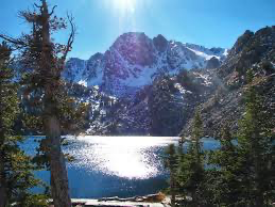
- Pine Creek Falls is a 4.0 kilometer heavily trafficked out and back trail located near Livingston, Montana that features a waterfall and is rated as moderate. The trail is primarily used for hiking, walking, and nature trips and is best used from May until October. Dogs are also able to use this trail but must be kept o n leash.
- Pine Creek Lake is a 14.8 kilometer heavily trafficked out and back trail located near Livingston, Montana that features a waterfall and is rated as difficult. The trail is primarily used for hiking, camping, and backpacking and is best used from July until September. Dogs are also able to use this trail.
- Pine Creek Lake is set in a huge glacial cirque below the north slope of Black Mountain. The trail to the lake is well-defined and meanders through forest en route to the base of Pine Creek Falls. Past the falls, the trail becomes steep and strenuous, continuing past a series of smaller waterfalls and two small lakes before reaching Pine Creek Lake, where great views and a well-earned rest await. If you're feeling frisky, head on up another two miles and 1,800 vertical feet to Black Mountain for incredible views of Paradise Valley and the Beartooth Plateau.
- Length: 10 miles (round-trip)
- Duration: 6 hours
- Difficulty: moderate to difficult (very difficult in snow and mud)
- Elevation gain: 3,400 feet
- Activities: hiking, backpacking
- Crowds: moderate traffic
- Seasonal conditions
o This can be an arduous hike during the best conditions, but the trail is very difficult in snow and mud. The trail is open year-round, though it’s best for hikers from July through September.
3. Livingston Depot Center
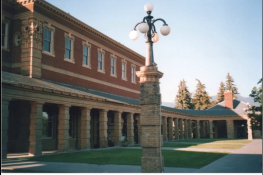
₋ The city of Livingston as we know it today owes its existence to the Northern Pacific Railroad, which planned it out as the original gateway for travel to Yellowstone Park, for which it held a basic monopoly for about a quarter century. It was vital as both a Park travel launch point and a key regional maintenance shops site. The first depot was constructed in 1882 and replaced by a larger structure just 5-6 years later, but even this became inadequate for the ever-increasing numbers, and so the NP hired Reed & Stem, the original architects for New York's Grand Central Station, to design a small masterpiece worthy of the important Yellowstone visitorship. It was rapidly completed in a remarkable half a year and built in a highly ornamented Italianate style with the two satellite buildings - the baggage building and the restaurant or "beanery" connected by a sweeping colonnade around a central courtyard adjacent to the tracks. The main building also served as an administrative division headquarters with a network of telegraph wires busily sending out orders and communications. Even as passenger rail began to taper off following the war years, it remained - and remains - an active hub of rail activity.
₋ Shortly after the NP and four other lines c onsolidated in the 1970 merger forming the Burlington Northern, however (later the Burlington Northern Santa Fe), the Depot became an Amtrak station, until passenger service consolidated in 1979 to the old Great Northern line to the north, and the area faced significant economic challenge (if mitigated somewhat with the advent of Montana Rail Link). Undaunted, local citizens bravely organized the Livingston Depot Foundation to restore this architectural treasure and anchor of the local historic district and bring it back again in service to all. Since the museum's opening in 1987, the Depot Center has risen again to its former historic role of welcoming visitors to the area, this time in sharing exhibits and programs regarding the region's rich history and reminding people daily of the lively heydays of passenger rail.
4. Yellowstone Gateway Museum
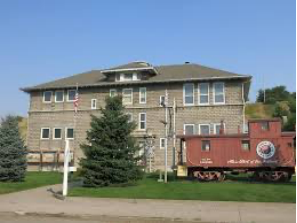
- For more than 11,000 years, towering mountain ranges and lush river valleys with abundant wildlife have drawn residents and visitors to this area. The wonders of Yellowstone National Park are nearby. Park county’s people are friendly. And our communities are charming. We invite you to become a part of our history.
- Explore permanent exhibits that interpret the area’s native cultures; early expeditions, including the Corps of Discovery and Lewis and Clark; the railway’s role in bringing visitors to Yellowstone National Park and other transportation themes; and the stories and artifacts of early-day communities. Outdoor exhibits include a one-room schoolhouse; blacksmith shop; a fleet of transportation vehicles, including a caboose.
- Current temporary exhibits include: Pull Up a Chair: Tales from the Seats of History; On Fire: Structural and Wildland Firefighting; A Military History of Park County; Communication: A Changing Conversation; Re-Creating an Ancient Technology: Modern Day Flint Knapping; Gardiner: Through the Lens of Time; and One Hundred Years Ago in Park County.
V. History
₋ The founding of the small historical railroad and ranching town of Livingston, Montana is a direct result of the Northern Pacific Railway. This site became a centralized point in the Rockies and the NPR's location for railroad shops to service NPR steam trains before their ascent over the Bozeman Pass, the highest point on the line. Livingston also became the first gateway town to America's first national park, Yellowstone National Park. This is the place to where the NPR began promoting heavily, to visitors from the East. The NPR operated a branch line running some fifty miles south through Paradise Valley to, first the Cinnabar station and later to Gardiner, Montana.
₋ Clark City
Downstream (the Yellowstone River), approximately 3 miles from present day Livingston, was where an old fisherman named Amos Benson built a log cabin in 1872. This is where a ferry, a trading post and a small community called Benson's Landing was. Across the river from Benson's Landing in June 1882 was the camp of about 40 tents of the Northern Pacific survey crew. This is where they thought that the supply store site they were looking for should be. On July 14, 1882, a man who worked for the Northern Pacific named Joseph J. McBride arrived with orders to find another site to build the store. Two days later on July 16, 1882 George H. Carver, a man who would become a major local businessman and local political leader, arrived at the site of present-day Livingston. Carver and McBride became the first local residents when they pitched their tents on the 16th. Also on the 16th arrived 30 freight wagons dawn by 140 head of oxen, carrying 140,000 lbs. of merchandise. The supply store was to be of Bruns and Kruntz, contractors. Eventually the tents gave away to log cabins. All of Benson's Landing encampment moved up the river to Carver and McBride's camp within 10 days of freight train's arrival.
This new settlement was called "Clark City" after Heman Clark, the principal contractor for the Northern Pacific from the Missouri westward. By fall the town was well established and an election poll in November 1882 counted 348 votes for delegates to congress. Clark City was on the southeast side at the East end of Lewis St. just southwest of the KPRK, and is now part of Livingston. B.F. Downen built the first permanent residence (out of wood) and Frank White owned the first saloon. Clark City eventually had 6 general stores, 2 hotels, 2 restaurants, 2 watchmakers, 2 wholesale liquor dealers, 2 meat markets, 3 blacksmiths, 1 hardware store, 30 saloons and a population of 500 people.
As Clark City was growing nobody realized that the Northern Pacific had marked on their maps a town called Livingston at the same place. The railroad had officially reached Clark City on November 22, 1882. In October 1882 a post office was chartered for Clark City. In November, Livingston received its charter. That was when they decided that Livingston be located a short distance away, and there established a profit of $200,000 for the ones who invested in the surveyed property - e in knowledge of Northern Pacific doings. Then Clark City residents bought lots to the northwest, in Livingston and moved. The birth of Livingston was the death of Clark City. The walking distance between was considerable and Clark City became stream-and-bog urban wildland. Very few buildings still remain.
₋ Incorporation
On December 21, 1882 Livingston was incorporated and originally renamed in honor of Johnston Livingston, pioneer Northern Pacific Railway stockholder, director and friend of Northern Pacific Railroad President Henry Villard. Johnston Livingston was director from 1875–1881 and 1884–1887. Crawford Livingston Jr., Johnston's nephew is who the name Livingston is more commonly credited to. Crawford bought heavily of real estate after the survey, and who on July 17, 1883, established the First National Bank in the city. Often he spoke of Livingston as "his town," and he apparently enjoyed the publicity of supposedly having a city named for him. However the name Livingston has always stood out in the Northern Pacific official family.
Livingston is along the Yellowstone River where it bends from north to east towards Billings and in proximity to Interstate 90. In July 1806 Captain William Clark of the Lewis and Clark Expedition camped on the city's present outskirts on the return trip east preparing to descend the Yellowstone River. Clark's party rejoined the Lewis party at the confluence with the Missouri River, near Williston, North Dakota.
VI. Other Information
- Filmography
o Rancho Deluxe, 1975
o Amazing Grace and Chuck, 1987
o A River Runs Through It, 1992
o The Horse Whisperer, 1998
o Cowboys vs. Dinosaurs, 2015
o Certain Women, 2016
o Walking Out, 2017
o Wildlife (film), 2018
VII. Contact Information
₋ Government
Mayor: Ed Meece
City manager: Michael Kardoes
a. TEL: 406-823-6000
b. Address: 414 E Callender Street, Livingston, MT 59047
₋ Contact
TEL: (406) 823-6000
Website: http://www.livingstonmontana.org/living/city_manager/index.php
